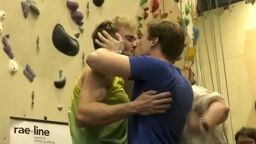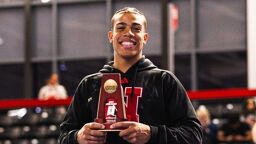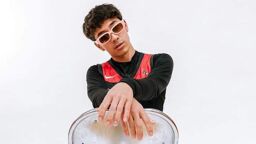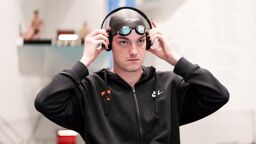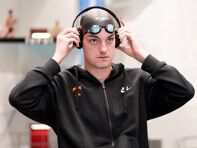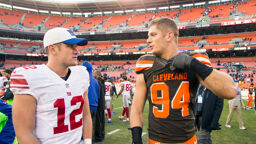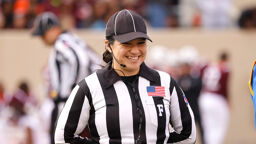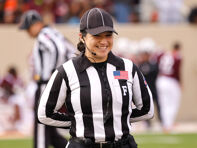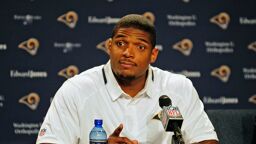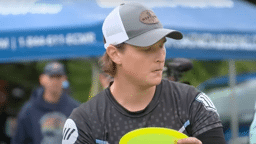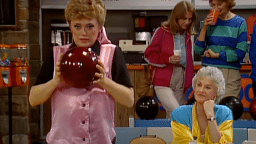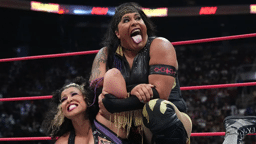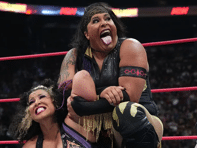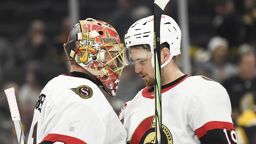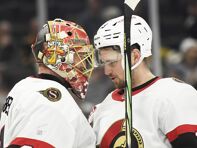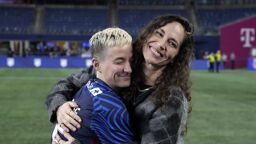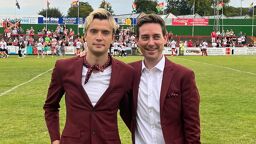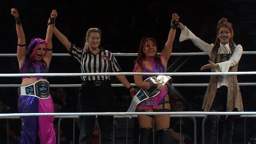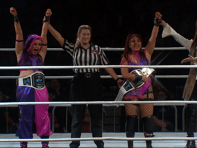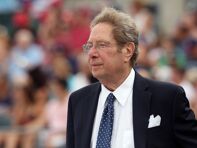As someone who has made it a personal tradition to tweet “Is it baseball season yet?” one minute after every World Series ends, you can probably guess that the National Baseball Hall of Fame and Museum is one of my favorite places in the world.
The Hall markets itself as “the spiritual home of the game” which, on the surface, sounds a tad mawkish and earnest. And yet every time I’ve found myself in the gallery reading the plaques of Ted Williams, Ryne Sandberg, Ernie Banks, or Jackie Robinson, I can’t help but feel moved enough to think “Yeah, spiritual sounds about right…”
Cooperstown 1, Houses of Worship 0.
A big part of the reason why I enjoy the Hall so much is that it’s like a three story time machine dedicated to relating the history of the game better than any place I’ve ever been. The museum’s historic timeline takes up the entire second floor of the building and I routinely lose several hours during every visit absorbing the stories within it.
That timeline also features well-curated exhibits depicting the journeys of African Americans, Latin Americans, and women in baseball. These exhibits shine light on several long-overlooked greats of the game and do not shy away from honestly depicting the struggles they’ve faced while attempting to carve a place for themselves in an industry that’s predominately been the domain of white males.
Yet as baseball has attempted to rectify some of the sins of its past and open itself up to players from more diverse backgrounds, there’s still one group in the game that has yet to be acknowledged within the museum.
It’s time for the Hall of Fame to add an exhibit spotlighting LGBTQ figures in baseball. If they have enough room to celebrate Disco Demolition Night, they should also have room for the community that gave us The Village People in the first place.

As I was reading Phil Bildner’s “A High Five for Glenn Burke” for our recent book review, I realized that as a gay man in 1970s-era baseball who did not hide his sexuality from the rest of his team, Burke was one of the most under-celebrated trailblazing figures in baseball history. But because his career on the field was pedestrian at best, Burke’s legacy could easily be lost amid an endless tide of replacement-level players who kicked around the bigs for four or five years. He needs authors like Bildner to tell his story to ensure that he doesn’t disappear into MLB’s background noise.
This is precisely where the Hall of Fame should step in. The story of Burke’s career is a very difficult one to hear but it’s necessary to get a sense of what it was like to be a gay player in the MLB climate of his era. There’s no better way to ensure that Burke remains a prominent figure in baseball than by making him the centerpiece of an exhibit in the most famous attraction dedicated to baseball history in the world.
As the Hall itself likes to remind visitors so often, baseball history is American history. So Burke’s story is also a reminder of what it was like to be a gay man anywhere in America in the late 70s.
When the Los Angeles Dodgers responded to rumors about Burke’s homosexuality by reportedly offering to pay for his honeymoon if he’d participate in a sham marriage to a woman, that showed why it felt impossible for many LGBTQ people to be open about who they were in their everyday lives.
When Oakland A’s manager Billy Martin introduced Burke to his new teammates by saying “This is Glenn Burke and he’s a faggot,” that was what bigots everywhere felt they could get away with. Especially if they were famous.
And soon after, when Burke was left without a job and ostracized by the rest of baseball, that symbolized the very real risk many LGBTQ people ran with their employers if anyone found out about their identities.

In order to tell the story of the LGBTQ community in baseball, the Hall would have to focus on these tragedies of Burke’s life. And to its credit, the Hall doesn’t sugarcoat baseball history anywhere in the museum. Even in celebratory exhibits about black and Latinx culture, it still displays hate mail sent to Jackie Robinson and Henry Aaron as well as racist newspaper cartoons mocking Minnie Miñoso’s accent to remind visitors of everything these greats had to overcome. And it would have to display the same honesty to put the career of Glenn Burke in its proper context.
But at the same time, an exhibit on LGBTQ baseball history could also serve to show the times when baseball has made progress in its relationship to the community. As just one example, the Hall could highlight the career of Billy Bean.
His time as a player was every bit as harrowing as Burke’s, as Bean tried to compete at the highest level while expending all of his mental energy keeping himself in the closet. But by contrast, his post-playing career has turned into an example of the game reckoning with its outdated bigotry. The work Bean has done as MLB’s Ambassador for Inclusion helps to ensure that no gay player ever has to go through what he endured again. That story also needs to be in the spotlight.
Similarly, the exhibit would need to be brutally honest about the experience of former umpire Dave Pallone, who was fired by MLB in 1988 for being gay. But again, it could contrast the sport’s disgraceful attitudes of that era with the experience of Dale Scott, who was able to come out publicly while still an active umpire in 2014 and received support throughout the game, including a tweet of praise from Curt Schilling(!).
(That particular digital artifact might have to be moved to another exhibit with the 2004 Red Sox and 2016 Cubs called “Legit Baseball Miracles.”)

Diving even further into the topic, the saga of the sport’s gradual and incremental progress could also be told through baseball’s LGBTQ executives. As in the examples of Pallone and Scott, the Hall could contrast the experience of former Pirates owner Kevin McClatchy, who remained closeted for the duration of his time as an MLB mogul, with that of the Cubs’ Laura Ricketts, the first out lesbian co-owner in MLB history, or those who followed like Billie Jean King, tennis icon and co-owner of the Los Angeles Dodgers, who had her own Bobblehead Day this past season.
This exhibit could also provide a proper space to focus on other LGBTQ trailblazers like Ila Borders, the first woman to earn a scholarship in collegiate men’s baseball and a pitcher in the independent minor leagues in the late 1990s. And Christina Kahrl, whose work as a Baseball Prospectus co-founder and sportswriter helped make the new wave of statistically-minded analytics go mainstream within the sport.
By examining the story of LGBTQ people in baseball through this lens, the Hall could make a case that even in a staid and slow moving institution like MLB, it gets better (occasionally). Which would make for another first — I’ve been visiting Cooperstown for a long time but have yet to see a single exhibit that references Dan Savage.
(Now that I think about it, doing so would make some of the museum’s artifacts way more interesting…)
Most importantly, though, is this: there is nothing more symbolic about the story that baseball likes to tell about itself than the red brick shrine nestled between the bucolic rolling hills of upstate New York and James Fenimore Cooper’s Lake Glimmerglass. Simply put, MLB would like nothing more than to have you believe that Cooperstown and the Hall of Fame are baseball.

An exhibit recognizing LGBTQ history in the game would become the most prominent sign of acceptance at the sport’s very highest level. It would signal that baseball as a sport and MLB as an organization welcome and honor the role of the community in the game.
Such a symbol of institutional acceptance would be another step on the path that eventually leads to an active baseball player feeling comfortable enough to publicly come out.
To be clear, I’m not saying that one exhibit will change things to the point where Daniel Murphy will start walking up to Sufjan Stevens’ “Mystery of Love” or the Texas Rangers will motivate fans to cheer by playing the ferris wheel scene from “Love, Simon” on the jumbotron.
But it would be a huge signal to baseball fans and players everywhere that the sport has chosen the path of inclusion and it isn’t going back. This summer, Cooperstown embraced the LGBTQ community by becoming the first municipality in New York State to authorize flying the rainbow flag over its Village Hall during Pride Month. Now it’s time for the village’s most famous building to do the same.



